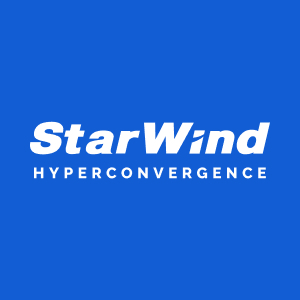Related Research Articles
Microsoft Virtual Server was a virtualization solution that facilitated the creation of virtual machines on the Windows XP, Windows Vista and Windows Server 2003 operating systems. Originally developed by Connectix, it was acquired by Microsoft prior to release. Virtual PC is Microsoft's related desktop virtualization software package.
Veritas Backup Exec is a data protection software product designed for customers with mixed physical and virtual environments, and who are moving to public cloud services. Supported platforms include VMware and Hyper-V virtualization, Windows and Linux operating systems, Amazon S3, Microsoft Azure and Google Cloud Storage, among others. All management and configuration operations are performed with a single user interface. Backup Exec also provides integrated deduplication, replication, and disaster recovery capabilities and helps to manage multiple backup servers or multi-drive tape loaders.
In computing. Physical-to-Virtual involves the process of decoupling and migrating a physical server's operating system (OS), applications, and data from that physical server to a virtual-machine guest hosted on a virtualized platform.

VMware ESXi is an enterprise-class, type-1 hypervisor developed by VMware, a subsidiary of Broadcom, for deploying and serving virtual computers. As a type-1 hypervisor, ESXi is not a software application that is installed on an operating system (OS); instead, it includes and integrates vital OS components, such as a kernel.

Kernel-based Virtual Machine (KVM) is a free and open-source virtualization module in the Linux kernel that allows the kernel to function as a hypervisor. It was merged into the mainline Linux kernel in version 2.6.20, which was released on February 5, 2007. KVM requires a processor with hardware virtualization extensions, such as Intel VT or AMD-V. KVM has also been ported to other operating systems such as FreeBSD and illumos in the form of loadable kernel modules.

In computing, virtualization (v12n) is a series of technologies that allows dividing of physical computing resources into a series of virtual machines, operating systems, processes or containers.

Microsoft Azure, or just Azure, is the cloud computing platform developed by Microsoft. It has management, access and development of applications and services to individuals, companies, and governments through its global infrastructure. It also provides capabilities that are usually not included within other cloud platforms, including software as a service (SaaS), platform as a service (PaaS), and infrastructure as a service (IaaS). Microsoft Azure supports many programming languages, tools, and frameworks, including Microsoft-specific and third-party software and systems.

OpenStack is a free, open standard cloud computing platform. It is mostly deployed as infrastructure-as-a-service (IaaS) in both public and private clouds where virtual servers and other resources are made available to users. The software platform consists of interrelated components that control diverse, multi-vendor hardware pools of processing, storage, and networking resources throughout a data center. Users manage it either through a web-based dashboard, through command-line tools, or through RESTful web services.

StarWind Software, Inc. is a privately held Beverly, Massachusetts-based computer software and hardware appliance company specializing in storage virtualization and software-defined storage.
CloudStack is open-source Infrastructure-as-a-Service cloud computing software for creating, managing, and deploying infrastructure cloud services. It uses existing hypervisor platforms for virtualization, such as KVM, VMware vSphere, including ESXi and vCenter, XenServer/XCP and XCP-ng. In addition to its own API, CloudStack also supports the Amazon Web Services (AWS) API and the Open Cloud Computing Interface from the Open Grid Forum.
HP ConvergedSystem is a portfolio of system-based products from Hewlett-Packard (HP) that integrates preconfigured IT components into systems for virtualization, cloud computing, big data, collaboration, converged management, and client virtualization. Composed of servers, storage, networking, and integrated software and services, the systems are designed to address the cost and complexity of data center operations and maintenance by pulling the IT components together into a single resource pool so they are easier to manage and faster to deploy. Where previously it would take three to six months from the time of order to get a system up and running, it now reportedly takes as few as 20 days with the HP ConvergedSystem.
HP CloudSystem is a cloud infrastructure from Hewlett Packard Enterprise (HPE) that combines storage, servers, networking and software.
openQRM is a free and open-source cloud-computing management platform for managing heterogeneous data centre infrastructures.
Veeam Software is a privately held US-based information technology company owned by Insight Partners. It develops backup, disaster recovery and modern data protection software for virtual, cloud-native, SaaS, Kubernetes and physical workloads. Veeam Software was co-founded by two Russian entrepreneurs, Ratmir Timashev and Andrei Baronov. While Veeam's start was built on protecting data across virtualized workloads, it has significantly expanded to protect data across a wide variety of platforms from AWS, Azure, Google Cloud, Microsoft 365, Kubernetes, etc. Veeam's current CEO, Anand Eswaran, has been pushing Veeam's strategy to accelerate share in the enterprise with adding several layers to Veeam's partnerships. Veeam took over the #1 market share in the data protection category in the second half of 2022. The company headquarters is in Kirkland, Washington, United States.

Windows Server 2016 is the twelfth release of the Windows Server operating system developed by Microsoft as part of the Windows NT family of operating systems. It was developed alongside Windows 10 and is the successor to the Windows 8.1-based Windows Server 2012 R2. The first early preview version became available on October 1, 2014 together with the first technical preview of System Center. Windows Server 2016 was released on September 26, 2016 at Microsoft's Ignite conference and reached general availability on October 12, 2016.

Dell Technologies PowerFlex, is a commercial software-defined storage product from Dell Technologies that creates a server-based storage area network (SAN) from local server storage using x86 servers. It converts this direct-attached storage into shared block storage that runs over an IP-based network.
Virtuozzo is a software company that develops virtualization and cloud management software for cloud computing providers, managed services providers and internet hosting service providers. The company's software enables service providers to offer Infrastructure as a service, Container-as-a-Service, Platform as a service, Kubernetes-as-a-Service, WordPress-as-a-Service and other solutions.

MSP360, formerly CloudBerry Lab, is a software and application service provider company that develops online backup, remote desktop and file management products integrated with more than 20 cloud storage providers.

CloudBolt is a hybrid cloud management platform developed by CloudBolt Software for deploying and managing virtual machines (VMs), applications, and other IT resources, both in public clouds and in private data centers.
LPAR2RRD is an open-source software tool that is used for monitoring and reporting performance of servers, clouds and databases. It is developed by the Czech company XoruX.